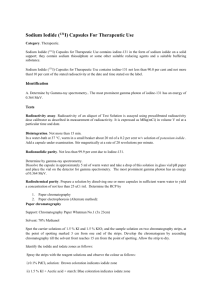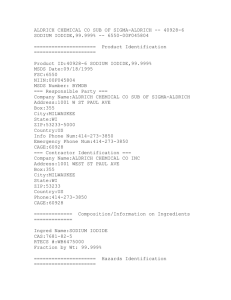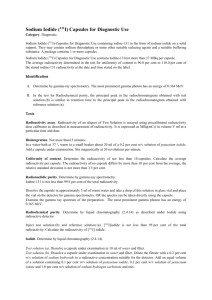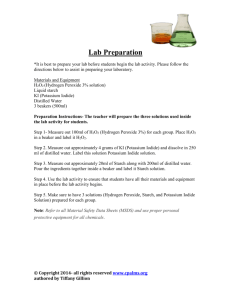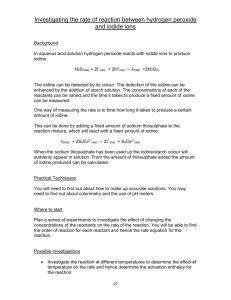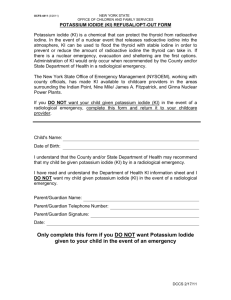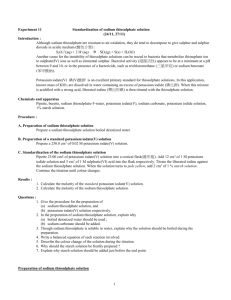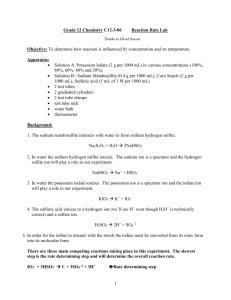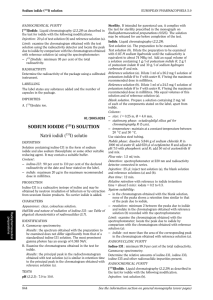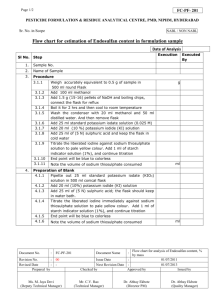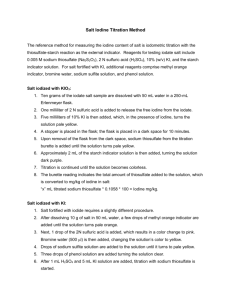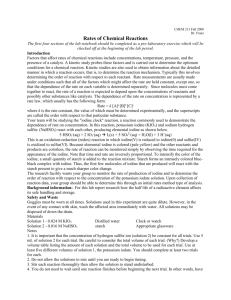Sodium Iodide (131I) Capsules for Diagnostic Use
advertisement
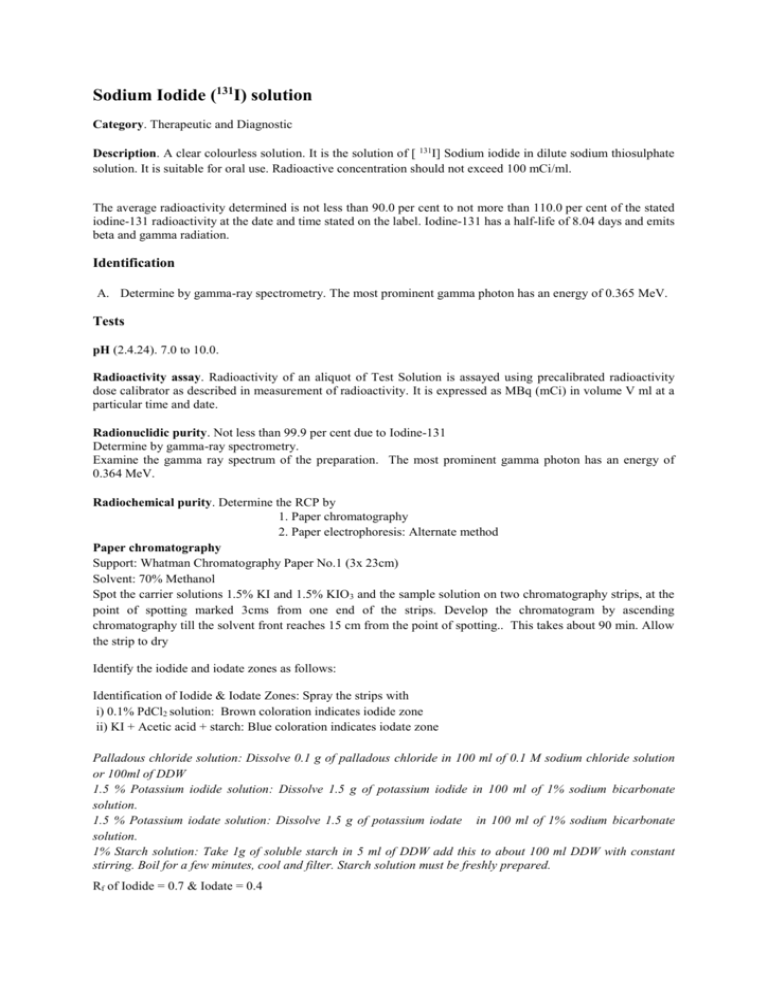
Sodium Iodide (131I) solution Category. Therapeutic and Diagnostic Description. A clear colourless solution. It is the solution of [ 131I] Sodium iodide in dilute sodium thiosulphate solution. It is suitable for oral use. Radioactive concentration should not exceed 100 mCi/ml. The average radioactivity determined is not less than 90.0 per cent to not more than 110.0 per cent of the stated iodine-131 radioactivity at the date and time stated on the label. Iodine-131 has a half-life of 8.04 days and emits beta and gamma radiation. Identification A. Determine by gamma-ray spectrometry. The most prominent gamma photon has an energy of 0.365 MeV. Tests pH (2.4.24). 7.0 to 10.0. Radioactivity assay. Radioactivity of an aliquot of Test Solution is assayed using precalibrated radioactivity dose calibrator as described in measurement of radioactivity. It is expressed as MBq (mCi) in volume V ml at a particular time and date. Radionuclidic purity. Not less than 99.9 per cent due to Iodine-131 Determine by gamma-ray spectrometry. Examine the gamma ray spectrum of the preparation. The most prominent gamma photon has an energy of 0.364 MeV. Radiochemical purity. Determine the RCP by 1. Paper chromatography 2. Paper electrophoresis: Alternate method Paper chromatography Support: Whatman Chromatography Paper No.1 (3x 23cm) Solvent: 70% Methanol Spot the carrier solutions 1.5% KI and 1.5% KIO 3 and the sample solution on two chromatography strips, at the point of spotting marked 3cms from one end of the strips. Develop the chromatogram by ascending chromatography till the solvent front reaches 15 cm from the point of spotting.. This takes about 90 min. Allow the strip to dry Identify the iodide and iodate zones as follows: Identification of Iodide & Iodate Zones: Spray the strips with i) 0.1% PdCl2 solution: Brown coloration indicates iodide zone ii) KI + Acetic acid + starch: Blue coloration indicates iodate zone Palladous chloride solution: Dissolve 0.1 g of palladous chloride in 100 ml of 0.1 M sodium chloride solution or 100ml of DDW 1.5 % Potassium iodide solution: Dissolve 1.5 g of potassium iodide in 100 ml of 1% sodium bicarbonate solution. 1.5 % Potassium iodate solution: Dissolve 1.5 g of potassium iodate in 100 ml of 1% sodium bicarbonate solution. 1% Starch solution: Take 1g of soluble starch in 5 ml of DDW add this to about 100 ml DDW with constant stirring. Boil for a few minutes, cool and filter. Starch solution must be freshly prepared. Rf of Iodide = 0.7 & Iodate = 0.4 Scan the strip using the radiochromatogram scanner or cut into 1cm sections and count in a well type scintillation counter. Calculate RCP as the % of activity present in the form of Na 131I as follows: % RCP = Activity in the Iodide zone x 100 / Total Activity The activity in the iodide zone shall not be less than 95% of the total radioactivity. Sodium thiosulphate content Thiosulphate content is determined by titrating the sample against the 0.005 N standard iodine solution. 1) Titration of blank solution Dissolve 250 mg of sodium bicarbonate powder in 10 ml DDW in a conical flask. Add 0.5 ml of 1% starch solution as indicator and titrate against 0.005 N standard iodine solution till the end point (color changes from colourless to blue). Volume of standard iodine solution consumed for blank = ‘B’ ml 2) Titration of sample solution Dissolve 250 mg of sodium bicarbonate powder in 10 ml DDW in a conical flask. Add 0.5 ml of 1% starch solution as indicator add 250 µl sample and titrate against 0.005 N standard iodine solution till the end point (colour changes from colourless to blue). Volume of standard iodine solution consumed by 250 µl sample = ‘A’ ml. The actual volume of standard iodine solution consumed for 1 ml sample = (A-B) x 4 ml = C ml Sodium thiosulphate content is calculated as follows: C x 0.005 x 158 = D mg Na2S2O3 /ml Sodium thiosulphate content in mg per Ci of 131I = D X 1000 mg/Ci Activity (mCi/ml) The limits should be 25-100mg per Ci of I-131on date of preparation Storage: Store at room temperature with adequate shielding Labelling. The label states (1) the time and date of calibration (2) the amount of 131I as iodide expressed in megabecquerels (microcuries or millicuries) at the time of calibration (3) the expiration date (4) the statement “caution- radioactive material”
